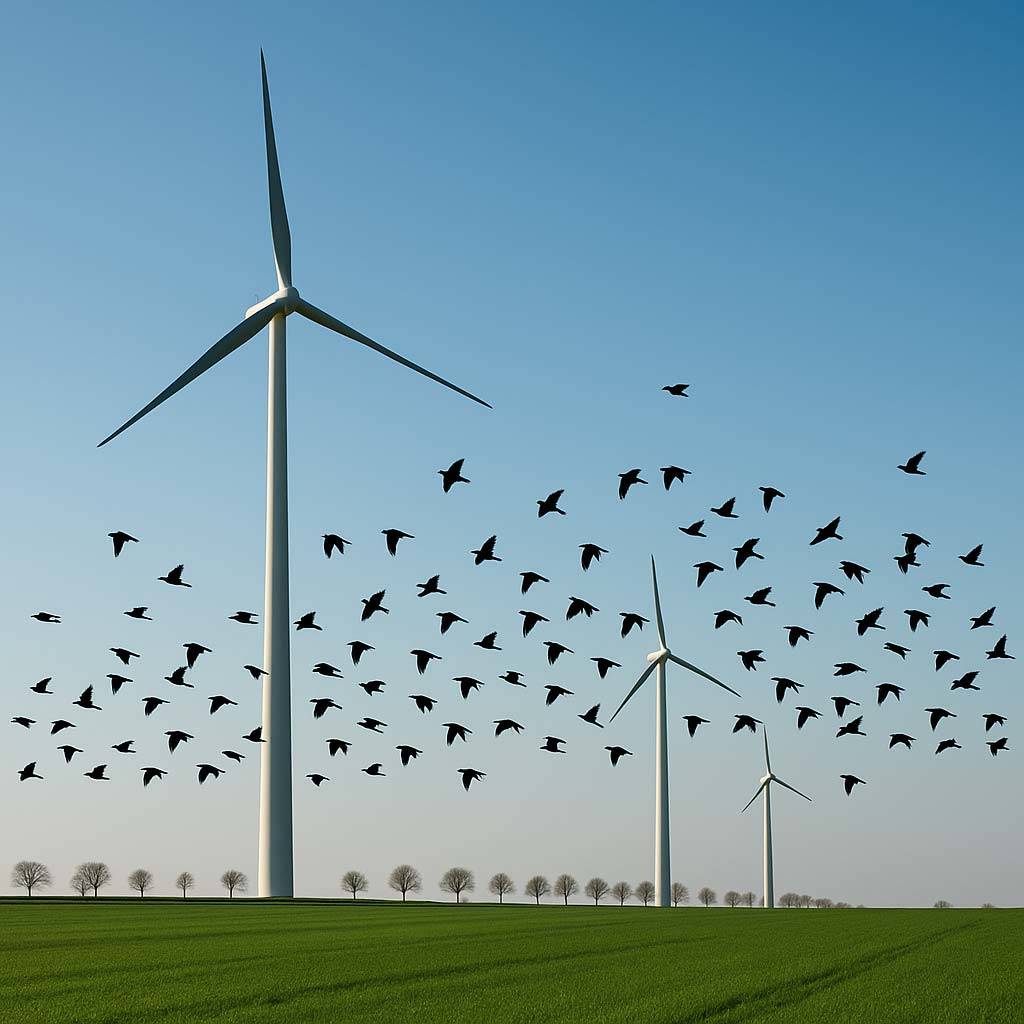Introduction
Wind turbines embody the hope of a transition to renewable and sustainable energy. However, behind this green promise lies a concerning reality: their impact on bird populations. Collisions with turbine blades represent a major risk for certain bird species, raising crucial questions about harmonizing energy development with biodiversity preservation.
Why Wind Turbines Pose a Risk to Birds
Wind turbines, due to their imposing structure and operation, disrupt bird flight in several ways. First, birds often struggle to perceive the rapidly moving blades, increasing the risk of collision. Turbines also alter birds’ natural habitat, disrupting migratory routes and nesting areas. These impacts are exacerbated in regions where turbines are installed without sufficient consideration for local ecosystems.
Key Figures on Avian Mortality
The impact of wind turbines on birds varies significantly depending on the region and species. In France and Switzerland, it is estimated that each turbine kills between 7 and 20 birds per year. In Spain, a country with a high density of wind turbines, this figure could reach several million birds each year. These estimates highlight the urgency of developing effective strategies to reduce turbine-related avian mortality.
Studies and Estimates
Various studies have been conducted to assess the impact of wind turbines on birds. An American study revealed that wind turbines kill approximately 140,000 to 500,000 birds each year in the United States. In Europe, figures vary considerably by country, with estimates ranging from hundreds of thousands to several million avian victims annually.
Solutions and Innovations to Reduce Impact
To minimize the impact of wind turbines on birds, several innovative solutions are being studied. Among them are the use of detection and deterrence technologies, such as radars and sound systems, to warn birds of the presence of turbines. Other approaches include modifying blade design to make them more visible and strategically choosing installation sites to avoid areas sensitive to avian wildlife.
Conclusion
Wind energy represents an essential part of the global energy transition. However, its development must be mindful of environmental impacts, particularly on avian wildlife. By integrating technological innovations and conservation strategies, it is possible to significantly reduce risks to birds while continuing to develop environmentally friendly renewable energy.
Sources



